What We Heard at the 2018 National Tanks Conference

The 26th National Tanks Conference & Exposition (NTC) just wrapped up in Louisville, Kentucky. The...
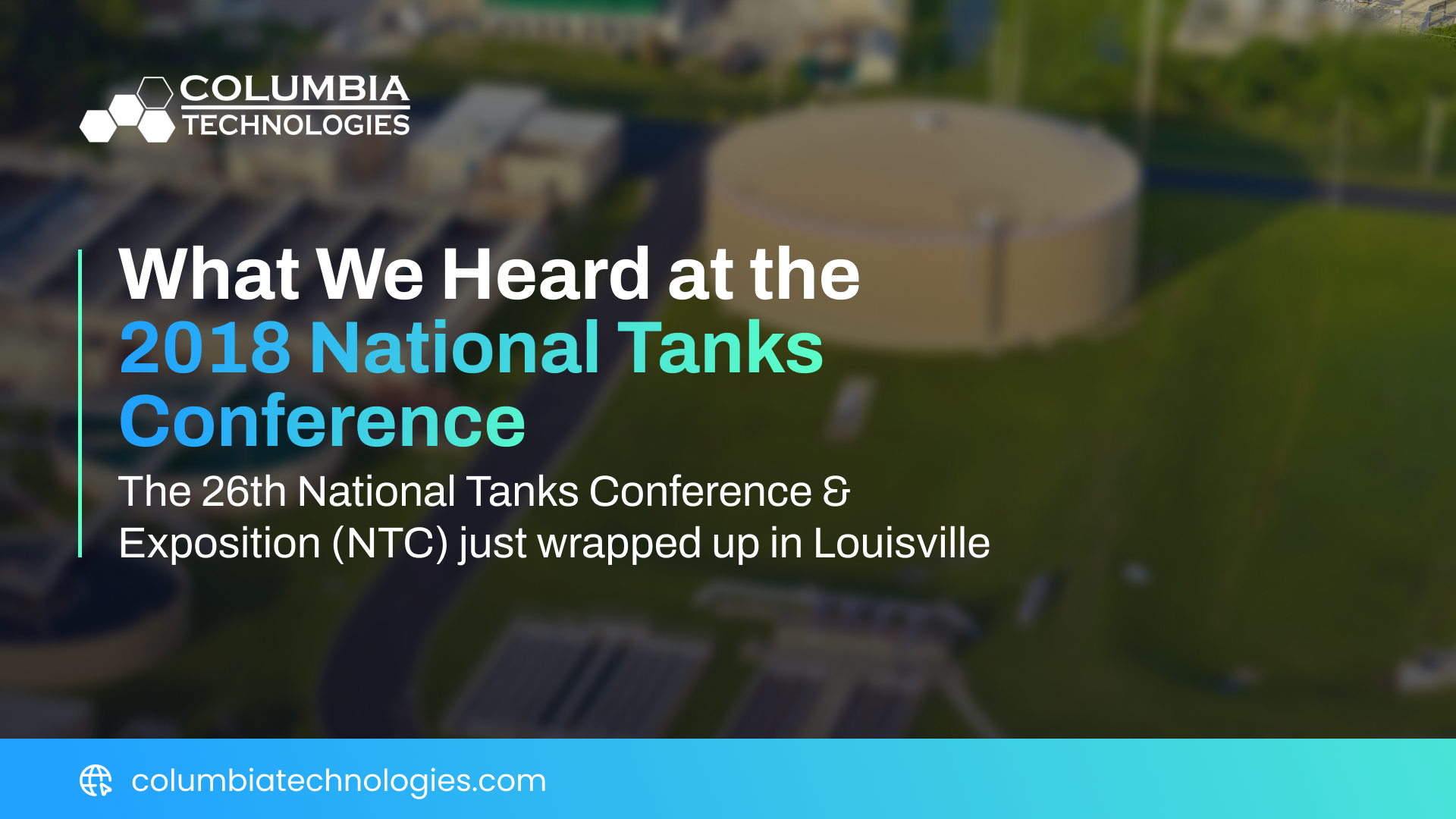
The 26th National Tanks Conference & Exposition (NTC) just wrapped up in Louisville, Kentucky. The...
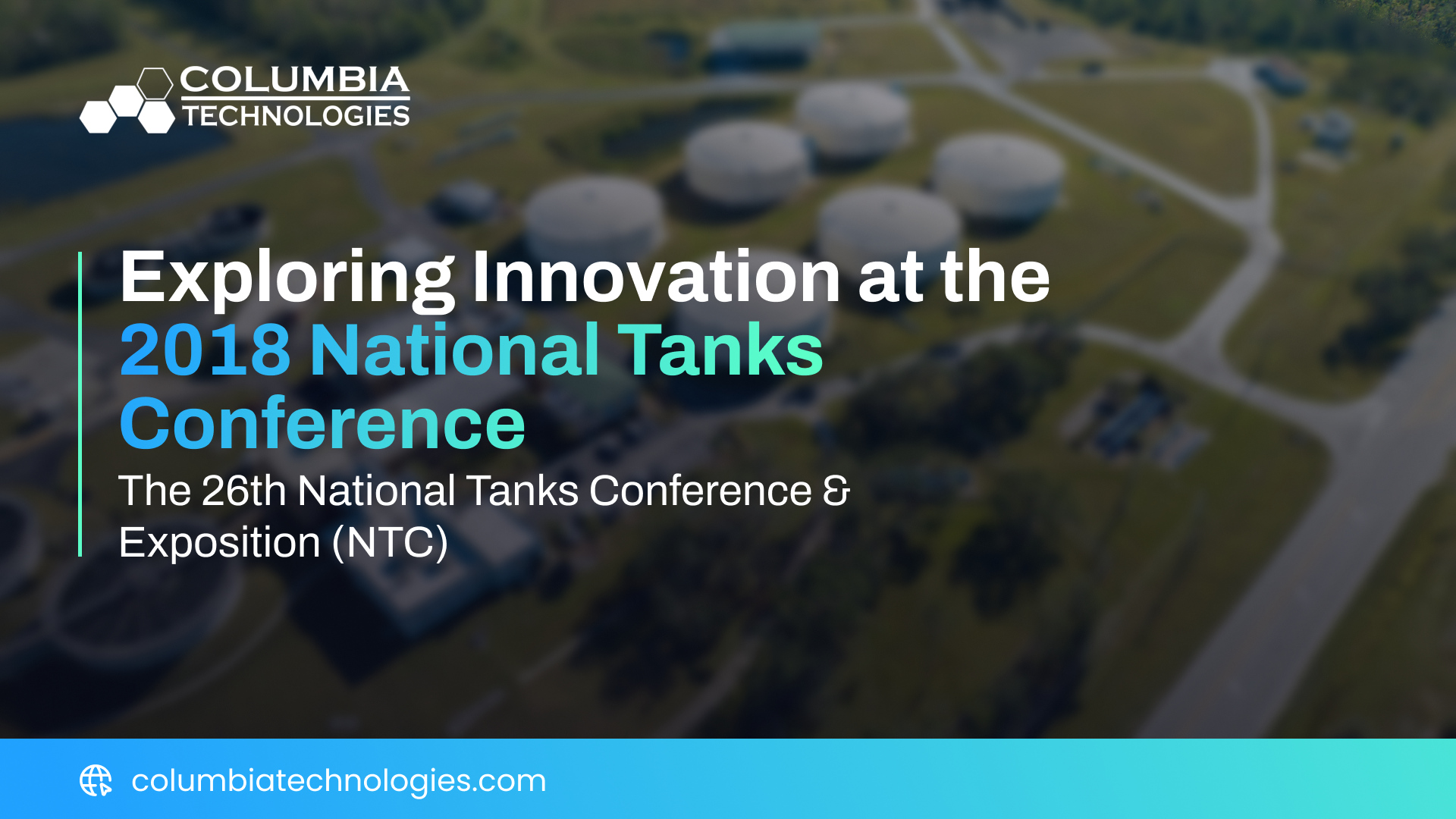
The 26th National Tanks Conference & Exposition (NTC) will be held September 11-13, 2018, at the...

Climate Change and Sea Level Change. Two controversial topics for some, but well-documented...
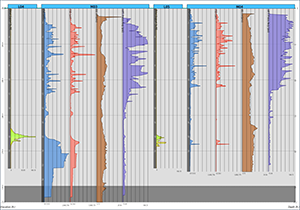
So, you’ve decided that a high-resolution 3D assessment of your site would help clear up the...
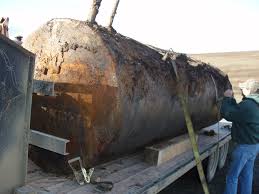
The EPA's Office of Underground Storage Tanks (OUST) reports the number of cases of Leaking...

COLLABORATIVE TEAM EFFORT HELPS MONETIZE THE COST OF LNAPL CLEANUP FOR TDEC COLUMBIA Technologies...
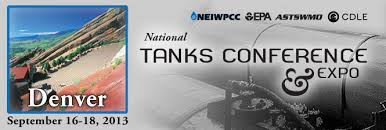
24th National Tanks Conference & Expo organized by NEIWPCC, EPA, ASTSWMO, and CDLE in Denver, CO on...

COLUMBIA Technologies recently supported the Sixth International Seminar on Environmental...

One of the most critical points to remember when developing a site closure work plan is that it...
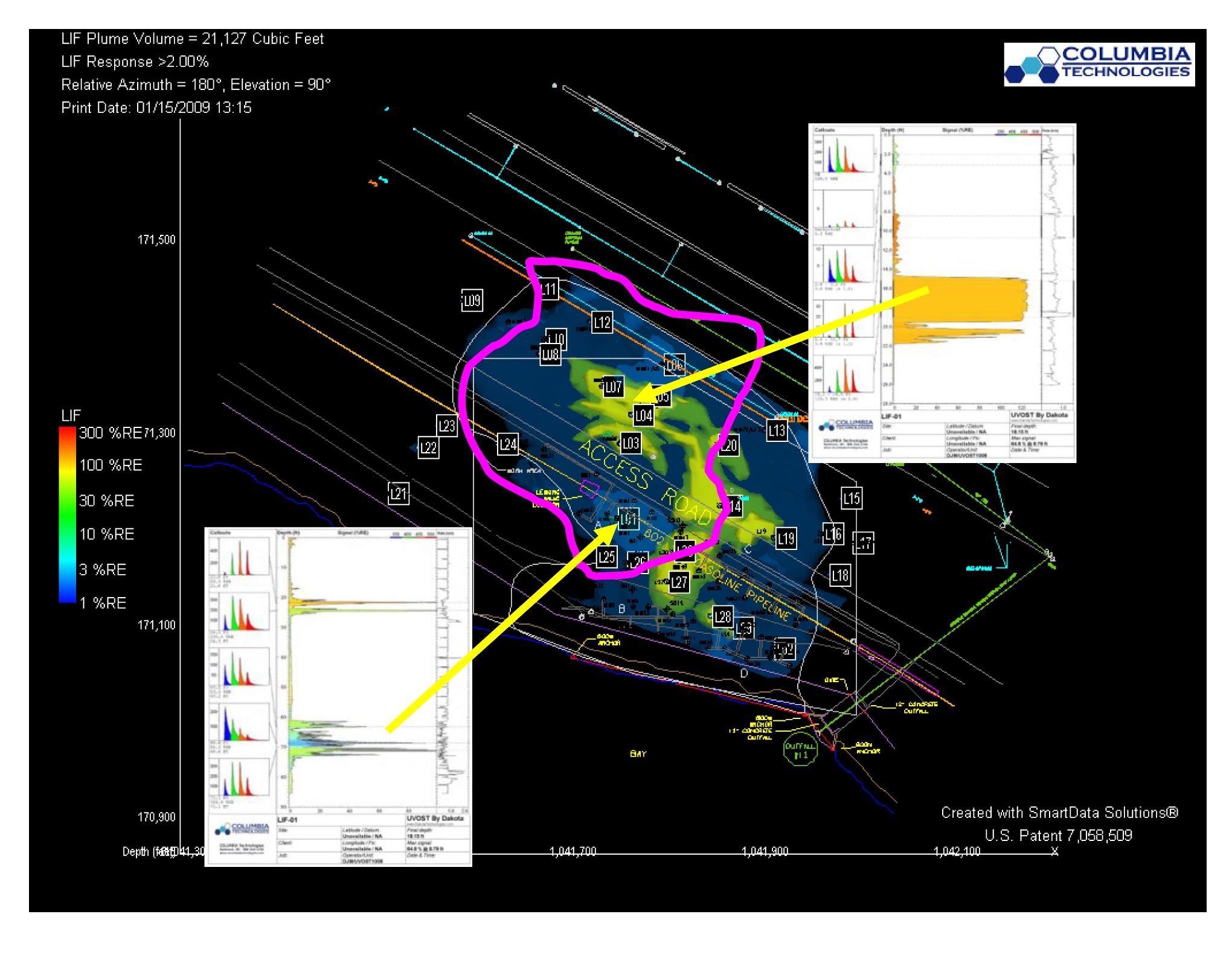
Since 2008, our team at COLUMBIA Technologies has supported site managers in evaluating petroleum...
The 26th National Tanks Conference & Exposition (NTC) just wrapped up in Louisville, Kentucky. The conference was professional rewarding as we learned how far the science of LNAPL management has come in recent years. Several presentations highlighted the importance of thorough data gathering before leaping to expensive remedies. Multiple innovative approaches to gather "scale appropriate" data in all types of soil conditions including consolidated bedrock were presented in the technical sessions. Our team had chance to hear from a lot of industry practitioners regarding their current challenges as well as attend the technical sessions. Here are some highlights of what we heard...
WHAT WE HEARD AT NTC 2018
Cho-Yi Risher and Wil Anderson from EPA OUST reported the results of their review of the state of financial responsibility of state funds started in 2017. Some of their observations:
A common theme: "If you have a water contamination problem, you have a soil contamination problem". An LNAPL conceptual site model (LCSM) should address where is the LNAPL, what soil does it reside in, is the LNAPL mass stable, and is it transmissive before implementing more aggressive remedial action.
HRSC or better yet, "scale appropriate" measurements of soil , water, and contaminants are needed for accurate conceptual site model before expending a lot resources on cleanup technologies or approaches. Typically, long-screen monitoring wells with their associated filter packs do not provide sufficient resolution to separate different soil permeabilities and accurately delineate residual contaminant mass.
HRSC is not one tool or methodology but a scientific approach employing scale appropriate measurements of soil (both consolidated and unconsolidated), water, vapor, and contaminants.
The industry and states need flexibility and mechanisms to allow for innovation. Regulations, funding mechanisms, and local procedures should incorporate flexibility to allow new and innovative approaches to be applied on the remaining difficult cases.
Natural Source Zone Depletion (NSZD) can generate mass reduction rates comparable to many engineered remediation methods. Characterization and performance monitoring should include the assessment of NSZD mass degradation rates and be compared to traditional remediation methods.
Tags: High Resolution Site Characterization (HRSC), LNAPL, UST, UST Cleanup Funds, NTC2018
The 26th National Tanks Conference & Exposition (NTC) will be held September 11-13, 2018, at the Galt House Hotel in Louisville, Kentucky. Pre-conference workshops convene on Monday, September 10.
I'm pleased to be presenting a workshop on Focusing High-Resolution Site Characterization (HRSC) for Selecting Remedial Technologies along with Andrew Kirkman of BP, Tom Kady with the EPA ERT, and Queenie Mungin-Davis from EPA Washington. Our goal is for the audience to develop ideas for reducing the cost of cleanup by implementing innovative scale appropriate measurements to improve their LNAPL Conceptual Site Models. We will explore:
For more details download a complete workshop agenda.
Tags: High Resolution Site Characterization (HRSC), LNAPL, UST, UST Cleanup Funds
Climate Change and Sea Level Change.
Two controversial topics for some, but well-documented science. I had an opportunity to read "The Water Will Come" by Jeff Goodell, one of Booklist's Top 10 Science Books of 2017, on an extended plane trip during this holiday season. Goodell presents a well-researched overview of the impact of climate change and the associated changes in sea level on countries, populations, infrastructure, and politics. While the geopolitical challenges of climate change are well beyond the scope of most of our local environmental remediation efforts, Goodell did prompt me to reflect on a few observations we've made in the field and the potential impacts to come.
Is your remediation site in a low lying or coastal area? US EPA confirmed Hurricane Harvey impacted 13 of 41 of the US’s most-toxic waste sites in the Houston area in 2017. Goodell points out that the "Runit Dome, a concrete bunker on Enewetak Atoll where the US military buried 111,000 cubic yards of radioactive debris left behind after then nuclear tests of the Cold War. It sits right at sea level. "It is already cracked, and as the waters rise, it will be submerged, creating a problem of nuclear waste in adjoining waters."
Is the infrastructure that supports your remediation systems or access to your facilities at risk in high-water conditions? The reactor meltdowns at Fukushima, Japan resulted from the failure of the cooling water systems in turn caused by the loss of power sources in extremely high water conditions precipitated by the tsunami and storm surge. Critical infrastructure and no doubt remediation systems failed in New York and New Jersey as a result of Super Storm Sandy.
The Navy base at Norfolk, VA, the largest in the U.S., anticipates a significant impact to operations (and environmental cleanup) by 2020.
How have changes in groundwater levels affected your long-term remediation systems? Even the performance of remedial systems sited a distance from low lying areas are often highly dependent on the accurate placement of system hardware in relationship to groundwater levels. Most readily affected are systems that rely on groundwater control through pumping or multiple phase extraction. Changing storm patterns result in often significant changes in groundwater level potentially with costly impact on the effectiveness of installed remediation systems.
Tags: High Resolution Site Characterization (HRSC), LNAPL, UST, UST Cleanup Funds, Sea Level Change, Climate Change
So, you’ve decided that a high-resolution 3D assessment of your site would help clear up the uncertainty in where any residual product is hiding and what its spatial relationship is to the soil permeability and the installed monitoring and recovery wells. How do you get started?
Multiple organizations including U.S. EPA (www.epa.gov/ust), ASTM International (astm.org), the Interstate Training and Regulatory Council (ITRC.org), the American Petroleum Institute (API.org), the Australian Cooperative Research Centre for Contamination Assessment and Remediation of the Environment (CRCCare.com), and the individual state jurisdictions all have published guidelines for undertaking a systematic assessment of petroleum contaminated sites.
Turns out, you probably have a lot of important information readily available to get started. Your key to success going forward will be both a systematic review of where your current LCSM stands to identify data gaps and uncertainties followed by a systematic data collection effort to close those data gaps with multiple lines of evidence.
Tags: High Resolution Site Characterization (HRSC), LNAPL, ITRC, UST, UST Cleanup Funds
The EPA's Office of Underground Storage Tanks (OUST) reports the number of cases of Leaking Underground Storage Tanks remaining unresolved exceeds 70,000 across the U.S. The EPA data also indicates the average cost of cleanup as US$130,000. As with any data, it's important to look at the distribution of data, not just averages. A vivid (maybe too vivid) example of this “flaw of statistics” is the fact that the average age of diaper wearer is somewhere near middle age, let’s say 45 years old. Drilling down into the data available from individual state UST cleanup funds, we find many examples of cleanup costs exceeding US$1.0M, sometimes with no end in sight. We can reasonably infer from the OUST data that the less complex sites have been resolved at a lower cost of cleanup, leaving the more complex sites yet to be addressed. This begs the question – WHY?
Tags: High Resolution Site Characterization (HRSC), LNAPL, ITRC, UST, UST Cleanup Funds
COLLABORATIVE TEAM EFFORT HELPS MONETIZE THE COST OF LNAPL CLEANUP FOR TDEC
COLUMBIA Technologies was selected by PM Environmental to support a high-resolution assessment of a former retail gas station with persistent LNAPL contamination. The goal of the assessment was to evaluate for the Tennessee Department of Environment & Conservation the impact of better information on monetizing the cost of long-term correctives action at these types of sites. The site is one of 246 remaining "difficult to resolve" sites in Tennessee and is typical of the many of over 16,000 remaining Leaking Underground Storage Tank sites in the U.S. The project involved a careful review of historical documents, cleanup activities, and extended field activities after hours and at night.
Detailed information gained through this effort delineated an extensive amount of residual gasoline within difficult soil conditions highlighting the need for careful consideration of remedial alternatives. The team employed the guidelines of the ITRC Technical and Regulatory Guidance for Evaluating LNAPL Remedial Technologies for Achieving Project Goals.
Tags: COLUMBIA Technologies, High Resolution Site Characterization (HRSC), LNAPL, News
24th National Tanks Conference & Expo organized by
NEIWPCC, EPA, ASTSWMO, and CDLE in Denver, CO on September 16-18, 2013
COLUMBIA Technologies is pleased to announce our support for the upcoming 24th National Tanks Conference in Denver, CO with two presentations and an exhibit booth.
On Sunday, September 15, 2013, our CEO, John Sohl and Vista GeoScience's President, John Fontana, will present a pre-conference workshop Improved In-Situ Remediation using Advanced High Resolution Site Characterization Tools for Remedial Design Characterization and Advanced Injection Technologies from 1:00 - 5:00 PM.
On Monday, September 16, 2013, our CEO, John Sohl, will present Improving LUST Management through High Resolution Data on LNAPL and Permeability to Close Those Pesky Sites during the Advanced LNAPL Assessment I session from 1:30 - 3:00 PM.
COLUMBIA staff will be present at the 24th National Tanks Conference & Expo and will be pleased to meet you at Booth 219. If you would like to organize a meeting in advance, please contact Dov Hoffman at (888) 344-2704 ext. 207 or dhoffman@columbiatechnologies.com.
Tags: John Sohl, LNAPL, NEIWPCC, News, UST, UST Cleanup Funds
COLUMBIA Technologies recently supported the Sixth International Seminar on Environmental Characterization and Remediation of Sites Impacted by Hydrocarbons - 2012 in Mexico City, Mexico. The seminar was hosted by Rede Latino Americana de Prevenção e Gestão de Sítios (ReLASC) in partnership with PEMEX Refinery and Ecoterra Servicios Ambientales.
On Friday, September 14, COLUMBIA presented Rapid High Resolution Site Characterization Using Direct Sensing Technologies. With local teaming partner, International Products and Organic Solutions (IPOS) on Saturday, September 15, COLUMBIA provided a hands-on demonstration displaying how these advanced tools can be applied to a wide range of contaminated sites.
For more information contact:
Tags: High Resolution Site Characterization (HRSC), LNAPL, News, Mexico
One of the most critical points to remember when developing a site closure work plan is that it simply costs too much to assess, remediate, and make decisions on information that is incomplete, inaccurate, and too late. Traditional approaches to characterizing subsurface conditions by drilling, soil sampling, and monitoring wells screened over large intervals are too incomplete to accurately deal with site heteregoneity.
Therefore, a high resolution site characterization approach is a more attractive option as it enables projects to move forward with remediation focused activities such as corrective action, free product recovery efforts, and site closure.
Let’s face it, the heterogeneity geology of a site is going to impact the migration of subsurface contamination opposed to the age old myth that it always follows the direction of groundwater. Introduction of the Hydraulic Profiling Tool (HPT) for site investigation and remediation efforts supports contaminant mapping activities to provide a greater understanding of subsurface conditions. By measuring direct pressure response, HPT develops weighted lines of evidence indicating the tight (or loose) grains and low (or high) flow zones in order to determine the migration pathways, remediation injection regions, and placements for monitoring wells. With an integrated Soil Electrical Conductivity (EC) array this tool also defines zones of lower conductivity which allows for the movement of contaminants into the subsurface.
Tags: Hydraulic Profiling Tool (HPT), LNAPL, Membrane Interface Probe (MIP), News, Site Characterization
Since 2008, our team at COLUMBIA Technologies has supported site managers in evaluating petroleum contamination at 125 and growing projects using direct sensing or imaging tools. These projects include a wide-range of application from gasoline and diesel fuel retail stations to Superfund sites, as well as petroleum terminals, petroleum storage facilities, pipeline terminals, railyards, oil refineries, complex underground storage tank (UST) sites, military installations, and truck refueling facilities. These sites have spanned across 28 states in the United States including Hawaii, and multiple provinces in Canada. One primary technology deployed at these sites is the Laser Induced Fluorescence, specifically LIF-UVOST® to determine the LNAPL distribution at these facilities. These experiences have provided us with a number of lessons learned about accurately, rapidly, and cost-effectively characterizing these sites using this technology.
Tags: High Resolution Site Characterization (HRSC), Hydraulic Profiling Tool (HPT), LNAPL, News
© COLUMBIA Technologies, LLC. All Rights Reserved.
HQ 1 Research Court Suite 450-402
Rockville, Maryland USA 20850-6252
Tel +1-888-344-2704 |
Email: info@columbiatechnologies.com
Privacy and Legal | Terms of Service